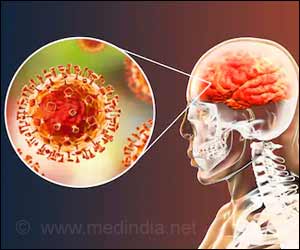New drug molecules have been discovered that could cure Nipah virus disease. The inhibitors – designed by 3D structural modeling – are capable of blocking the transmission of 15 different Nipah virus strains.
- About 13 promising new drug molecules against Nipah virus have been discovered
- These are capable of inhibiting the transmission of 15 different strains of Nipah virus
- The new drug molecules could potentially cure Nipah virus disease in the near future
TOP INSIGHT
New drug molecules against Nipah virus have been developed by computerized 3D structural modeling. The inhibitors can block transmission of 15 different Nipah virus strains and could potentially cure the disease.
Read More..
Nipah Virus: Discovery & Transmission
Nipah virus is named after a village called Kampung Sungai Nipah in Malaysia, where it was first isolated from a Nipah virus-infected patient in 1998, who eventually died from the infection. Nipah virus is an RNA (ribonucleic acid) virus, which belongs to the Family Paramyxoviridae and genus Henipavirus.Nipah virus encephalitis is an important emerging zoonotic disease that is transmitted by fruit bats, which are also known as ‘flying foxes’. These fruit bats belong to the Family Pteropodidae and genus Pteropus and are the natural hosts of the Nipah virus.
Nipah Virus Outbreaks
The first outbreak of Nipah occurred in 1998 in peninsular Malaysia from September 1998 to April 1999, which subsequently spread to Singapore through imported pigs from Malaysia that were infected with the Nipah virus. Other major outbreaks include the Meherpur outbreak in Bangladesh and the Siliguri outbreak in West Bengal, India. Both of these outbreaks occurred in 2001, which killed 72-86 percent of infected individuals. Another major outbreak occurred in 2007 in Nadia, West Bengal, India. Subsequently, minor outbreaks have been reported from Kerala in 2018 and 2019.Salient Features of the Study
- Three-dimensional (3D) models of 9 proteins of Nipah virus were constructed
- The 3D models were used to design inhibitors that blocked the activity of the 9 Nipah virus proteins
- The effectiveness of inhibition was tested in 15 different strains of Nipah virus:
- 7 strains from Malaysia
- 5 strains from India
- 3 strains from Bangladesh
- Computer modeling identified the following inhibitors against Nipah virus:
- 4 putative peptide inhibitors
- 146 small molecule inhibitors
- 13 inhibitors were the most promising potential drug candidates against multiple strains of Nipah virus, based on the following parameters:
- Binding strength
- Stability
- Neutralization efficacy
Concluding Remarks
Madhusudhan concludes: “It is highly likely that the proposed inhibitors would be potent against all strains of Nipah virus and other related zoonotic viruses that pose a serious epidemic threat.” He adds: “Computational approaches can help identify and design inhibitors that could be rapidly tested or even deployed.”Funding Source
The study was funded by the Wellcome Trust-DBT India Alliance, the Council of Scientific & Industrial Research (CSIR), and the Department of Science & Technology, Government of India.Reference:
- Predicting and Designing Therapeutics against the Nipah Virus - (https://journals.plos.org/plosntds/article?id=10.1371/journal.pntd.0007419)
Source-Medindia
 MEDINDIA
MEDINDIA




 Email
Email





